Hearst Castle, San Simeon
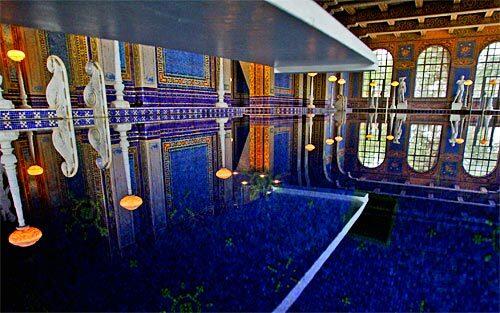
The Roman Pool, which lies in all its blue-tiled splendor under the tennis courts, is the last stop on tours. The pool perhaps takes its cue from ancient baths such as the Baths of Caracalla in Rome, which date to the early 3rd century. Also on the grounds is the splendid outdoor Neptune Pool. (Bob Chamberlin / Los Angeles Times)
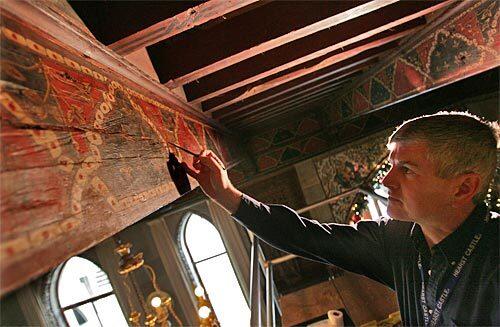
Conservator Gary Hulbert works on a bullfighting scene on a Spanish ceiling that was painted before Columbus first sailed for the New World. It’s one of the many architectural treasures in the castle that “the Chief,” as Hearst was known, acquired on his trips through Europe. (Bob Chamberlin / Los Angeles Times)
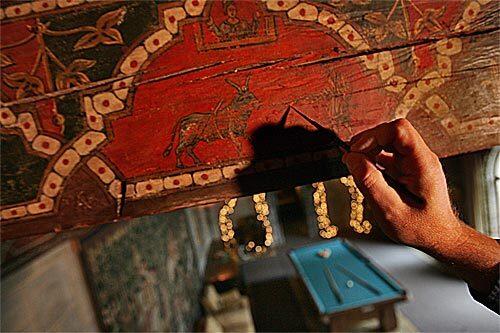
Hulbert repairs a matador scene in the billiard room. “This project has been, what, 3 1/2 years?” says Hulbert, one of a team of specialists who has tidied up hundreds of figures painted on beams, corbels and coffer panels. They’ve got a ways to go -- there are 1,019 little paintings on this ceiling, all dating to the 1480s, all survivors of five centuries of smokers’ exhalations and fireplace fumes. (Bob Chamberlin / Los Angeles Times)
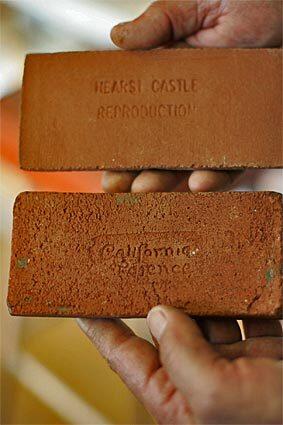
Despite the care that went into construction of the estate, wind, water and time all have had their way, and there’s plenty of work for the restoration and maintenance workers, including the reproduction of tiles. New tiles (top) get a different stamp so future generations will know which ones are replacements and which are original, made by California Faience in the 1920s (bottom). (Bob Chamberlin / Los Angeles Times)
Advertisement
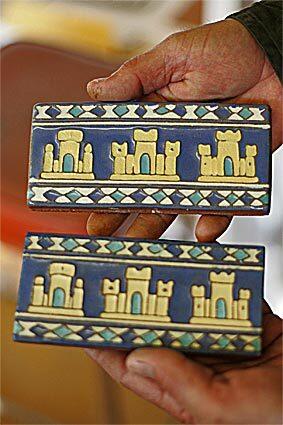
A replacement tile (top) is compared with an original, made by a long-gone Berkeley manufacturer in the 1920s. The replacement tiles are baked in an on-site kiln to match the originals. The terraces outside the Case Grande alone contain more than 40,000 of those 6-inch-long blue bar tiles. (Bob Chamberlin / Los Angeles Times)
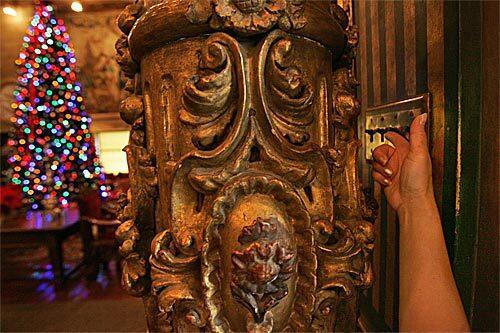
Museum custodian Letty Lachance turns on the lights in a room decorated for the holidays. The light panel is hidden next to a 300-year-old Spanish Baroque gilded column. Each morning, a team sets to work on the estate, throwing about 100 light switches and sweeping, mopping, dusting, vacuuming, waxing and adjusting the rubber mats that tourists will step onto starting about 8:20 a.m. (Bob Chamberlin / Los Angeles Times)
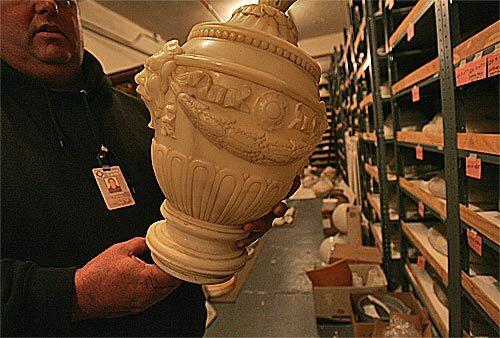
Curator Frank Young moves a resin urn from a basement storage vault. The urn was made to look like alabaster. “It’s just like having your own house,” says Young, “but 1,000 times bigger.” (Bob Chamberlin / Los Angeles Times)
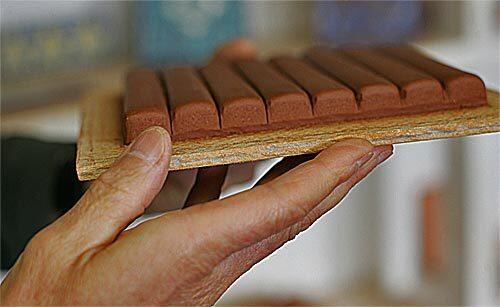
Restoration specialist David Wilson holds a drying rack of clay tiles that he made to replace broken ones. In another workshop on the grounds, restoration and maintenance workers use urethane molds, cement and sand in six consistencies to copy and replace exterior features as they erode. (Bob Chamberlin / Los Angeles Times)
Advertisement
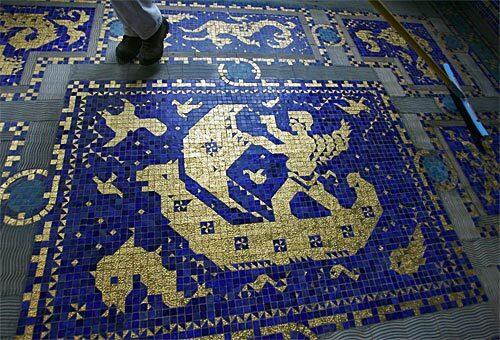
Treading carefully, painter Harold Hadley walks by one of the ornate Italian glass-tile floor designs he helped to restore in the indoor Roman Pool area. (Bob Chamberlin / Los Angeles Times)
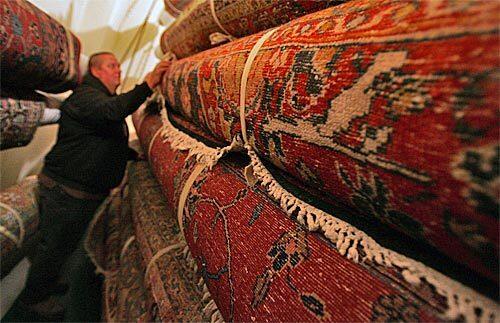
Curator Frank Young moves huge Oriental rugs, which are stored on racks in the basement. The main house and the guest quarters are chock full of treasures, including tapestries and silver, ancient Greek amphorae, 17th century Persian tiles, a 15th century Spanish chest and 14th century Italian paintings. (Bob Chamberlin / Los Angeles Times)
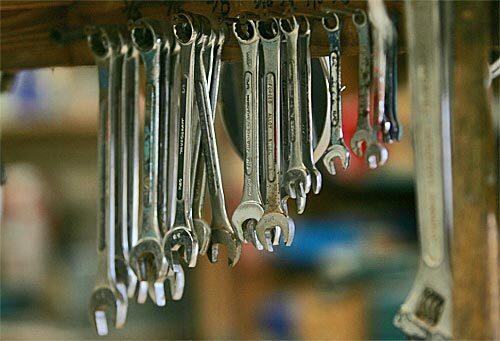
Tools of the trade: Various-sized wrenches hang within easy reach in the shop area. (Bob Chamberlin / Los Angeles Times)
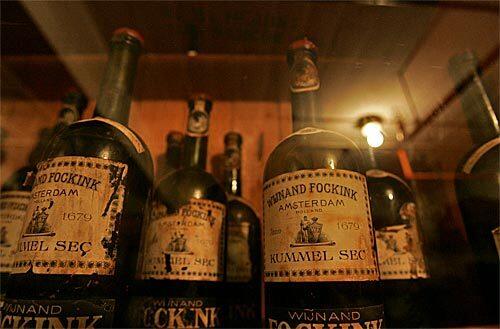
Bottles crowd the castle’s wine cellar. In “Hearst Castle: The Biography of a Country House,” author Victoria Kastner notes that Hearst’s favorite guests were show-business people, perhaps because they “had little sense of history, still less of social standing, but they had a tremendous appreciation for effect.” (Bob Chamberlin / Los Angeles Times)
Advertisement
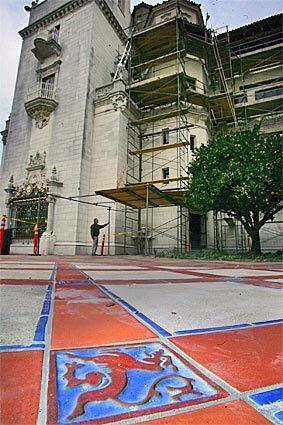
Restoration supervisor Bruce Jackson checks scaffolding on the southern terrace, where workers are refinishing teakwood gables. The patio’s tile work also was recently restored. (Bob Chamberlin / Los Angeles Times)
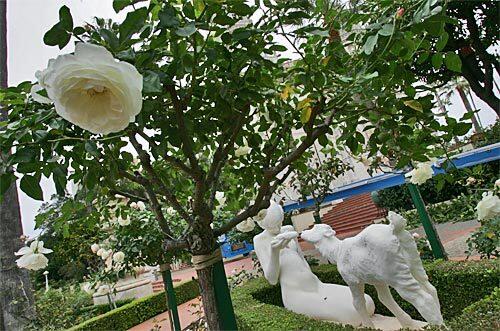
Wander the grounds and you’ll encounter rosebushes (there are 1,000 on the estate) intermingled with statues. Hearst took great interest in the landscaping. He preferred green foliage, and he liked low hedges of pyracantha, eugenia, boxwood and myrtle but nothing exotic. “He wanted a ton of color and big flowers,” a landscaping supervisor says. (Bob Chamberlin / Los Angeles Times)
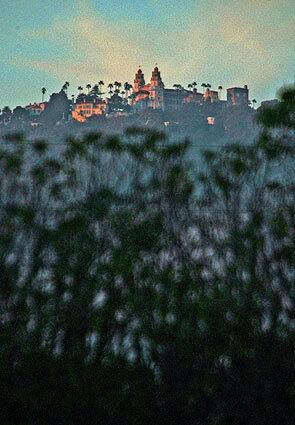
Pale evening light envelops Hearst Castle as the last rays of the sun shine on the hillside and the mist begins to roll in. (Bob Chamberlin / Los Angeles Times)



